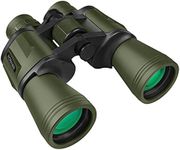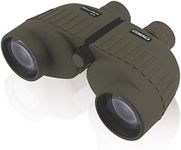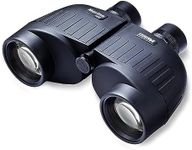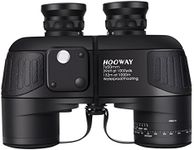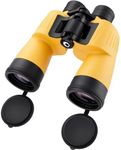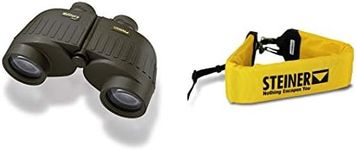Buying Guide for the Best Marine Binoculars
Choosing the right marine binoculars is important for anyone spending time on the water, whether for boating, sailing, fishing, or wildlife observation. Marine binoculars are designed to withstand harsh environments and help you see clearly over long distances, even in challenging weather. When picking the best pair for your needs, it's important to understand the key features and how they relate to your intended use. By focusing on the most important specifications, you can ensure your binoculars will be reliable, comfortable, and effective for your time at sea.Magnification and Objective Lens DiameterThis specification is usually written as two numbers, like 7x50. The first number (magnification) tells you how many times closer objects will appear, while the second number (objective lens diameter, in millimeters) affects how much light the binoculars gather. For marine use, 7x magnification is standard because it provides a steady image even on a moving boat, while a 50mm lens lets in plenty of light for clear viewing in low-light conditions. Higher magnification can make images shaky and harder to use on water, while smaller lenses may not be bright enough. Choose 7x50 for general boating, but if you need something more compact and are mostly out in bright daylight, you might consider slightly smaller lenses.
Waterproofing and Fog ResistanceMarine binoculars must be waterproof to survive splashes, rain, and even accidental drops in water. Fog resistance is also important because temperature changes can cause lenses to fog up, making them unusable. Look for binoculars that are labeled as waterproof and nitrogen- or argon-purged, which means the inside is filled with gas to prevent fogging. If you spend a lot of time in wet or humid conditions, these features are essential to keep your view clear and your binoculars working well.
Field of ViewField of view describes how wide an area you can see through the binoculars, usually measured in feet at 1,000 yards or in degrees. A wider field of view makes it easier to spot moving objects, such as other boats or wildlife, and to scan the horizon quickly. For marine use, a wide field of view is helpful for navigation and safety. If you need to track fast-moving objects or want to scan large areas, prioritize a wider field of view. If you mostly focus on stationary objects, a narrower view may be acceptable.
Image StabilizationImage stabilization is a technology that helps reduce the shakiness caused by hand movements or the motion of a boat. This feature is especially useful if you plan to use higher magnification or if you often find yourself in rough waters. Image-stabilized binoculars are more comfortable to use for long periods and can help you see details more clearly. If you have trouble holding binoculars steady or expect to be in choppy conditions, consider this feature.
Compass and RangefinderSome marine binoculars include a built-in compass and rangefinder, which can help with navigation and estimating distances on the water. The compass shows direction, while the rangefinder helps you judge how far away objects are. These features are especially useful for sailors, navigators, or anyone who needs to take bearings or measure distances. If navigation is a key part of your activities, look for binoculars with these built-in tools.
Durability and GripMarine environments can be tough on equipment, so durability is important. Look for binoculars with a rugged, rubberized coating that protects against bumps and provides a secure grip, even when wet. A good grip helps prevent accidental drops and makes the binoculars easier to handle with wet or gloved hands. If you expect rough handling or frequent use in challenging conditions, prioritize models with strong, protective coatings and ergonomic designs.
Weight and SizeThe weight and size of binoculars affect how comfortable they are to carry and use for long periods. Heavier binoculars can be tiring to hold, but they may also be more stable. Compact models are easier to store and carry, but may sacrifice some optical performance. Think about how you plan to use your binoculars—if you need to carry them for long periods or want to pack light, choose a lighter, more compact pair. If you prioritize image quality and stability, a larger, heavier model may be better.
